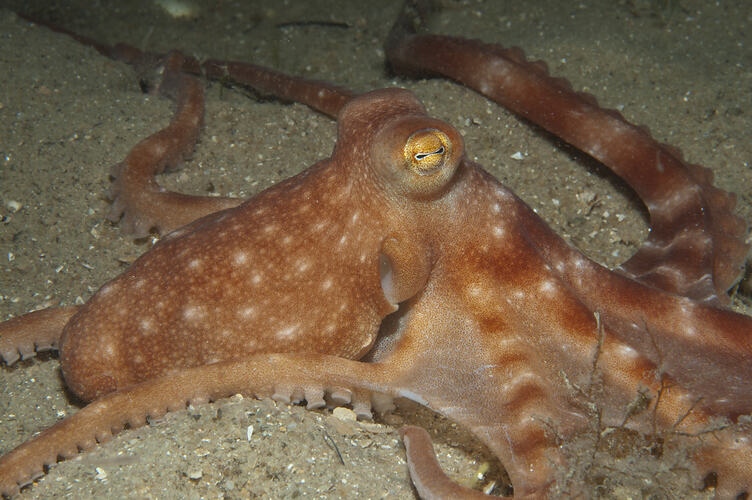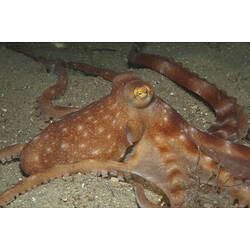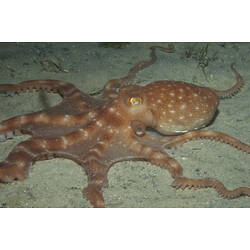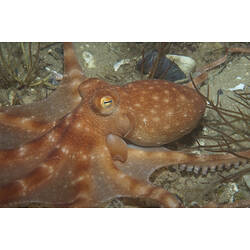General Description
Moderate-sized, elongate octopus. Body oval-shaped. Arms long, tapering to narrow tips. Body and arms red with scattering of white spots over body and regular transverse bands of small white spots along arms. Webs short, almost transparent. White skin ridge extends along 75% of mantle length on each side of mantle. Maximum mantle length to 10 cm, total length to around 48 cm.
Biology
This octopus emerges at night to forage over the sand, probing its thin arms down burrows and holes for small crustaceans. During the day this octopus remains buried deep in the sand. This octopus is an excellent burier, capable of quickly digging into the sand if threatened. Females lay large eggs that produce well-developed young, likely to settle to the seafloor quickly after hatching. Very little is known of the biology and behaviour of this octopus as it was only discovered in the late 1980's. This species was originally placed in the genus Octopus but more recent work moved it into the genus Callistoctopus.
Distribution
South-eastern Australia.
Habitat
Sand substrates in coastal waters to depths of around 130 m.
More Information
-
Animal Type
-
Animal SubType
-
Brief Id
Body and arms red with scattered white spots.
-
Colours
Orange, White, Red
-
Maximum Size
47 cm
-
Habitats
-
Diet
Carnivore
-
Diet Categories
Crustaceans
-
Hazards
Potential to bite, especially if handled. Venom status unknown.
-
Endemicity
-
Commercial
No
-
Conservation Statuses
CITES: Not listed, FFG Threatened List: Not listed, DSE Advisory List: Not listed, IUCN Red List: Least Concern
-
Depths
Shallow (1-30 m), Deep ( > 30 m)
-
Water Column Locations
On or near seafloor
-
Taxon Name
-
Scientific Author
(Stranks, 1990)
-
Common Name
Southern White-spot Octopus
-
Phylum
-
Class
-
Subclass
-
Order
-
Suborder
-
Family
-
Genus
-
Species Name
bunurong




